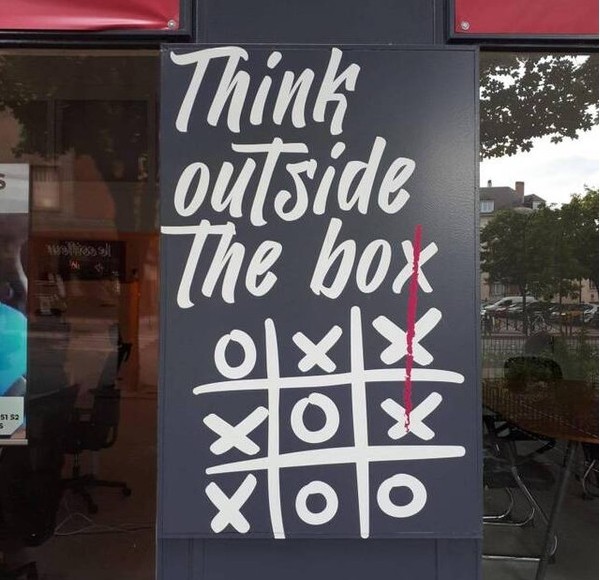
I am sure that you have heard the saying;-
A Specialist is someone knows
more and more about less and less;
until he knows everything about nothing.
Although the aphorism may bring a smile to our lips it, nevertheless, is a portent of a problem with modern education. Children have to make a decision at 12 or 13 years if they are to study Arts or Science. The former have to decide on the Word or the Action; English or Foreign. The latter have the choice of Physics, Maths, Computing or Chemistry. When they go to University the choice of subject is even more restricted. It is rare, say, for an Astronomer to know how a jellyfish is born or the difference between an And gate and a Nand gate. These days it is a very rare man or woman who has a very broad, but very deep knowledge of many fields
When I was at University in the middle/late 1950s we discussed many things during our free time; a name that then was often the subject for discussion was Immanuel Velikovsky and the details in his first book that was published in 1950.
Who was he, I hear you ask; and why was he discussed?
Velikovsky was born in Russia in 1895; he was a brilliant student and studied Medicine. At the beginning of the revolution his family moved to Germany where he continued his studies of Psychotherapy under a pupil of Freud. I do not know if it was Freud’s obsession with Oedipus, Moses and the Pharaoh Akhenaton that started Velikovsky’s interest in some of the strange meteorological stories of ancient events that are written about in the Old Testament, in the historical books, in Psalms and in the writings of the Prophets. He also started a lifetime studies of weather and planetry reports that occurred in China, India, Middle East, Mexico and Alaska during the same period. Other study fields were astronomy and chemistry. In 1938 he, his wife and two daughters, moved to New York where he found that there were better facilities to complete his studies and to avoid the troubles that were in Germany.
Velikovsky proved that he was a polymath when, in 1950 he wrote Worlds in Collision. Even before publication it was greeted with a howl of derision and attempts by senior scientists of various disciplines to ban it from ever seeing light. His publishers were targeted and threatened by blackmail and boycotts, so that they passed the book on to an associate company who did not ordinarily publish scientific books and were immune from any scientific boycotts.
Why was there such a backlash?
Velikovsky committed the sin of ‘thinking outside the box’.

Examples of the perturbations that promoted his ideas occurred between 747 and 687 BC were recorded by the Royal Astronomers at Nineveh. Clay tablets record that the Earth year varied from 360 to 366 days. The Moon, being smaller, was more moved from its orbit around the Earth and a Lunar month varied at different times from 27 to 36 days. In Jerusalem the shadow of the gold disc at the eastern door of the Temple did not fall on its usual mark on the floor at the spring and autumn equinox. It was not only in the Middle East that the perturbations were recorded; writings at Egypt, India, Peru and Japan demonstrate that they were similarly affected.
Velikovsky also committed the sin of ‘thinking outside of the box’ of the Volcanologists, the Geologists, the Oceanographers, the Palaeontologists and of the followers of Darwin’s theory (who believed that there had been a slow evolution with no sudden jumps) and many other scientists as he entered their ‘Holy Ground’ overturning their ideas that were fixed in their minds as ‘The Truth’ or ‘The Science’. (Where have we heard those phrases before?)

Most of the criticisms were made even before Velikovsky’s book was on the library shelf and before it could be read by those who wanted it banned. He was called a heretic, a crank during this period of persecution. Some Scientists were proud to claim that they never read it, but, nevertheless, campaigned to have it banned. It was as if the persecution of the middle ages had returned.
As I found when I worked in research, the ‘Not invented by me, so it cannot be true’ attitude pervades in the mind of many senior scientists. Or worse, “I have made up my mind; please do not confuse me with facts”. Do not be brainwashed by the claim that the only science is ‘My Science’ attitude of many of (so-called) Experts.
Until his death he produced book after carefully researched book all with new ideas, or to answer his critics, daring the (so-called) Specialists to prove him wrong – they could not.
Today Velikovsky is an almost forgotten man, (except for Old Fogies’, like me) whereas his friend, Einstein, with whom he shared many ideas, is considered to be a great Scientist (and is known throughout the world). In fact, both were great Scientists because they thought outside of the box and were prepared to publish their research.
Postscipt by author:
I expect you may have gathered that Velikovsky is a hero of mine. Today research is so expensive that it is almost impossible for someone to self-finance a science project. All Velikovsky needed was access to hundreds of books and photocopies of documents held in libraries, museums and universities all over the earth, and a brain to absorb all the information whilst fitting it all together. Fortunately he found willing and helpful librarians to find the former.
Velikovsky had to beg NASA to put extra software on the Mariner 2 spacecraft on its visit to Venus – he could not afford the cost to do it individually. Fortunately the previous spacecraft had proved that the temperature was at least 600 degrees (the maximum that the hardware was able to measure) and that the atmosphere was ‘very thick’. It was already in hand to arrange the hardware and software to confirm the exact temperature and the chemicals in the atmosphere. It was a simple matter to add more to determine the direction of rotation.
John Marlow.